A Trip to Queens (or, the Ghost of Robert Moses)
 So here's what's shaping up to be the semi-regular post where I check in, comment on a few things completely unrelated to running, and assure those few readers still hanging on that I am, indeed, alive and well. And just to get the injury update out of the way, I'll report that most of me seems to be healing up nicely, except for my hamstrings. I might actually have to break down and make an actual appointment with an actual doctor, which I've been dreading. But enough about that for now.
So here's what's shaping up to be the semi-regular post where I check in, comment on a few things completely unrelated to running, and assure those few readers still hanging on that I am, indeed, alive and well. And just to get the injury update out of the way, I'll report that most of me seems to be healing up nicely, except for my hamstrings. I might actually have to break down and make an actual appointment with an actual doctor, which I've been dreading. But enough about that for now.What I really wanted to mention was that Kate and I headed off to the Queens Museum of Art last Saturday to check out one-third of the much-hyped "Robert Moses and the Modern City" exhibit. Yes, only one-third -- the exhibit is actually spread out over three museums, including the Museum of the City of New York and the Wallach Art Gallery up at Columbia University in addition to the QMA.
Robert Moses, of course, was the controversial New York City urban planner who -- over the course a career that spanned almost 35 years -- arguably shaped the physical fabric of the five boroughs more than any other single person. Although never elected to any office, at various (and often overlapping) times he was the Commissioner of the NYC Department of Parks (1934-1960), Chairman of the Triborough Bridge and Tunnel Authority (1936-1968), Chairman of the Mayor's Committee on Slum Clearance (1946-1960), President of the New York World's Fair 1964-65 Corporation (1960-1967), and New York City Construction Coordinator (1946-1960), as well as a member of the City Planning Commission from 1942 until 1960. He was, it would seem, a very busy guy.
During his tenure with the city Moses advocated, planned, and oversaw projects ranging from the building of bridges and superhighways to the construction of parks and playgrounds to the razing of whole blocks and the subsequent development of extensive public housing complexes. While few people might see fit to complain about the creation of public pools and green spaces, Moses has also been widely vilified, especially since the publication of Robert Caro's exhaustive biography, The Power Broker: Robert Moses and the Fall of New York, in 1974. Over the past three decades, it's become essentially an article of faith among many academics and community activists alike that Moses was a heartless megalomaniac, intent on imposing his rigid vision of the urban future on New York, not only at the expense of individual citizens but of whole neighborhoods. Particular criticism has been leveled at his pro-automobile policies, especially his determination to build a network of multi-lane superhighways throughout the five boroughs with little or no consideration for the people whose homes and neighborhoods were obliterated during construction.
It's not my desire, however, to jump into the debate or to take sides about either Moses' intentions or his legacy. Believe me, there's been plenty written already (click here for a recent Times article, or just start Googling). But the three exhibits are, clearly, a deliberate attempt to at least partially extricate Moses from the historical purgatory he's been wandering these last few decades. By emphasizing the broader political and cultural contexts within which he operated -- the contemporary infatuation with the International Style and the influence of Le Corbusier, for example, or the irresistible lure of federal money tied to interstate highway construction or the development of public housing -- the exhibits succeed in presenting Moses as, at the very least, a complicated figure who cannot be fully understood or analyzed without also considering the much broader picture.
Because of our background (Kate works at a museum, of course, and we both have our MAs in history) we found a thing or two to criticize, but overall we liked the exhibit well enough and are planning on hitting the other two before too long. In the meantime, though, I'd certainly recommend the QMA exhibit (which mostly consists of photographs and a few illustrations) for anyone who lives in the area and thinks they might be interested in such things. And even if you're not, there's always the panorama, which by itself is worth the five-dollar price of admission (and which was, indeed, commissioned by Moses for the 1964 World's Fair). I don't know the exact academic museum terminology, but I thought it was really, really cool.
Anyway, here are a few pictures from the excursion:
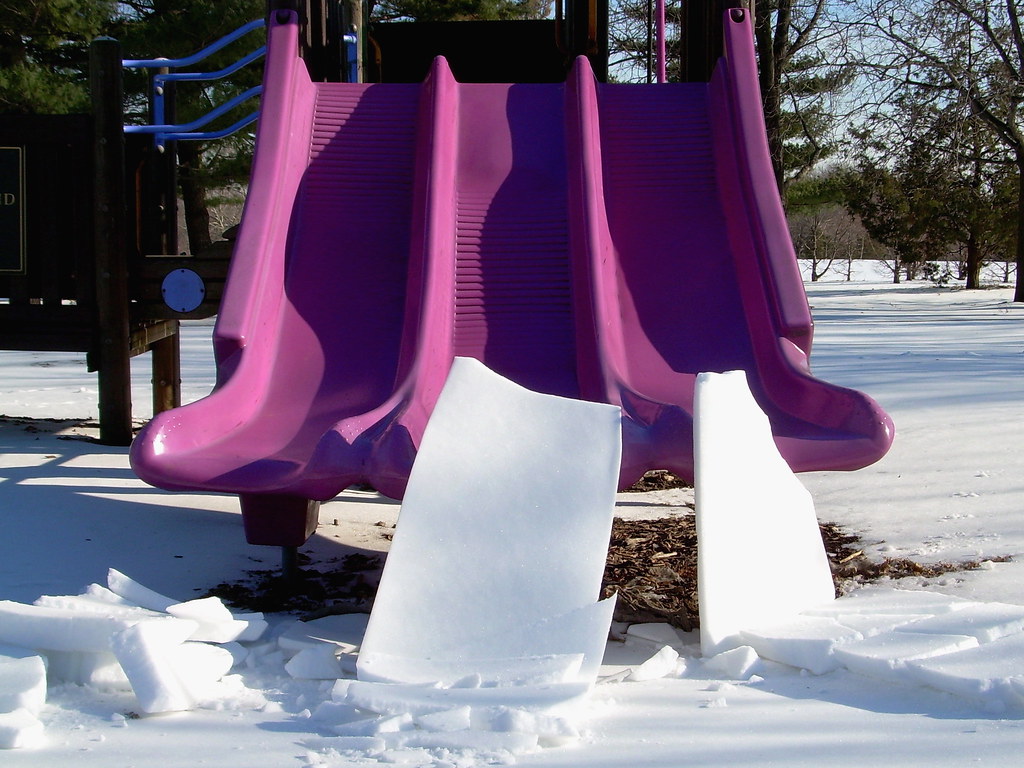
A playground in Flushing Meadows Corona Park, which now occupies most of the site of the 1964 World's Fair. Kate thought the fallen snow at the end of the slides would make a good picture. I agreed.
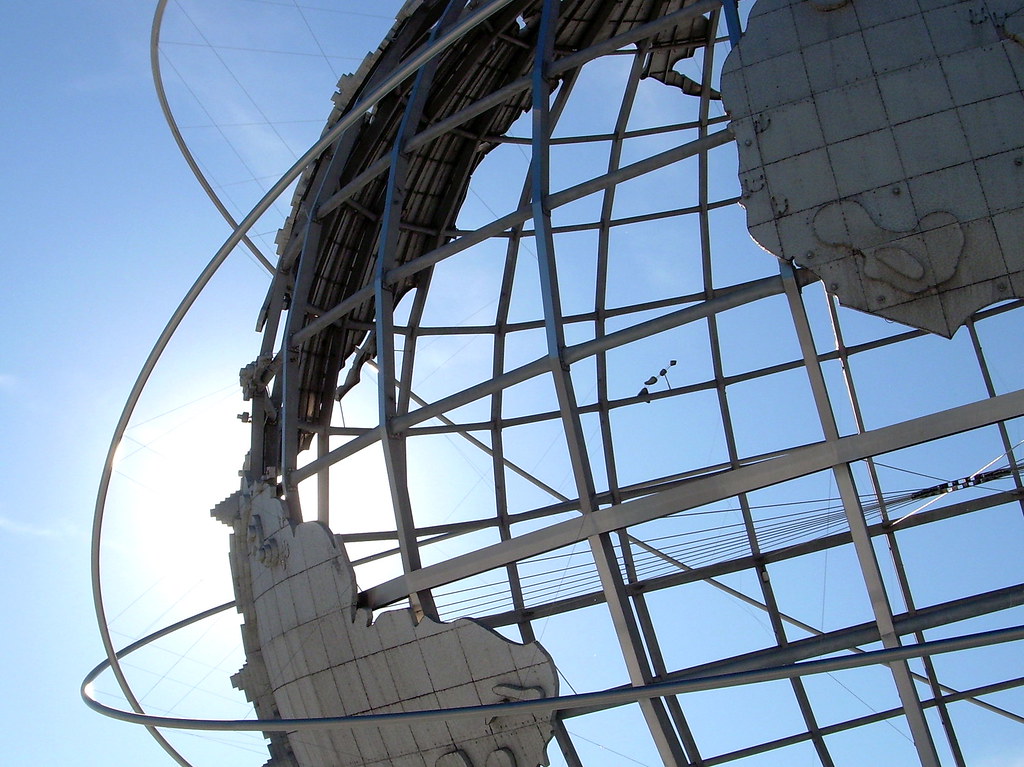
The Unisphere, built for the 1964 Fair.
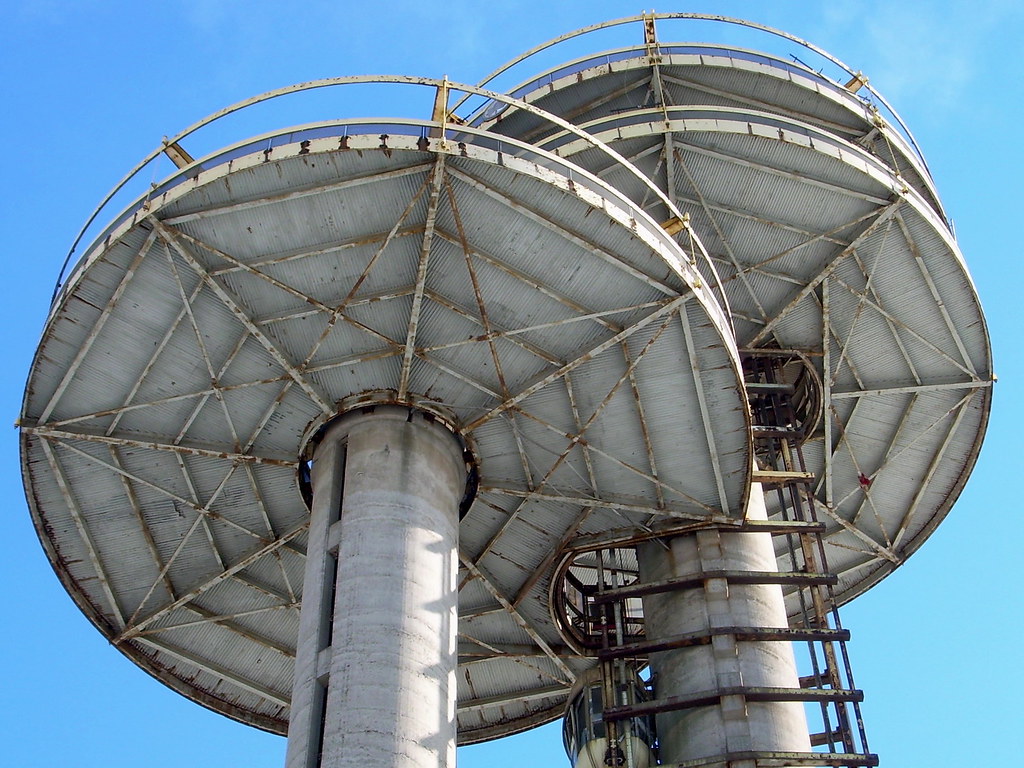
The observation towers adjacent to the old New York State pavillion from the 1964 World's Fair. They're among the few structures still standing. The small, faintly yellow pod-shaped thing on the tower to the right (at the very bottom of the photo) is one of the elevators.
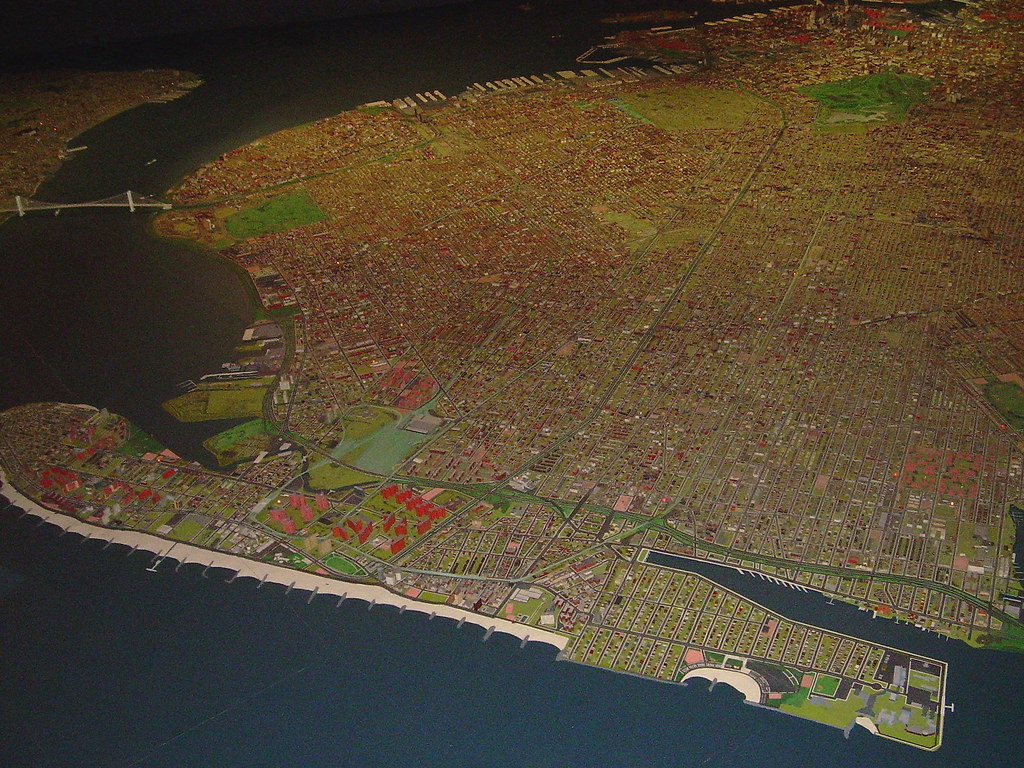
A portion of the panorama at the QMA, a 1:1200 scale model of the entire city. This view, naturally, is of Brooklyn, looking north over Coney Island and up toward Red Hook and downtown. That's the Verrazano-Narrows Bridge (another Moses project) in the upper left-hand corner, Prospect Park in the upper right, and Kingsborough Community College in the bottom right corner, at the eastern edge of Manhattan Beach. It's kind of weird to think I've run all the streets in the bottom two-thirds of the photo.
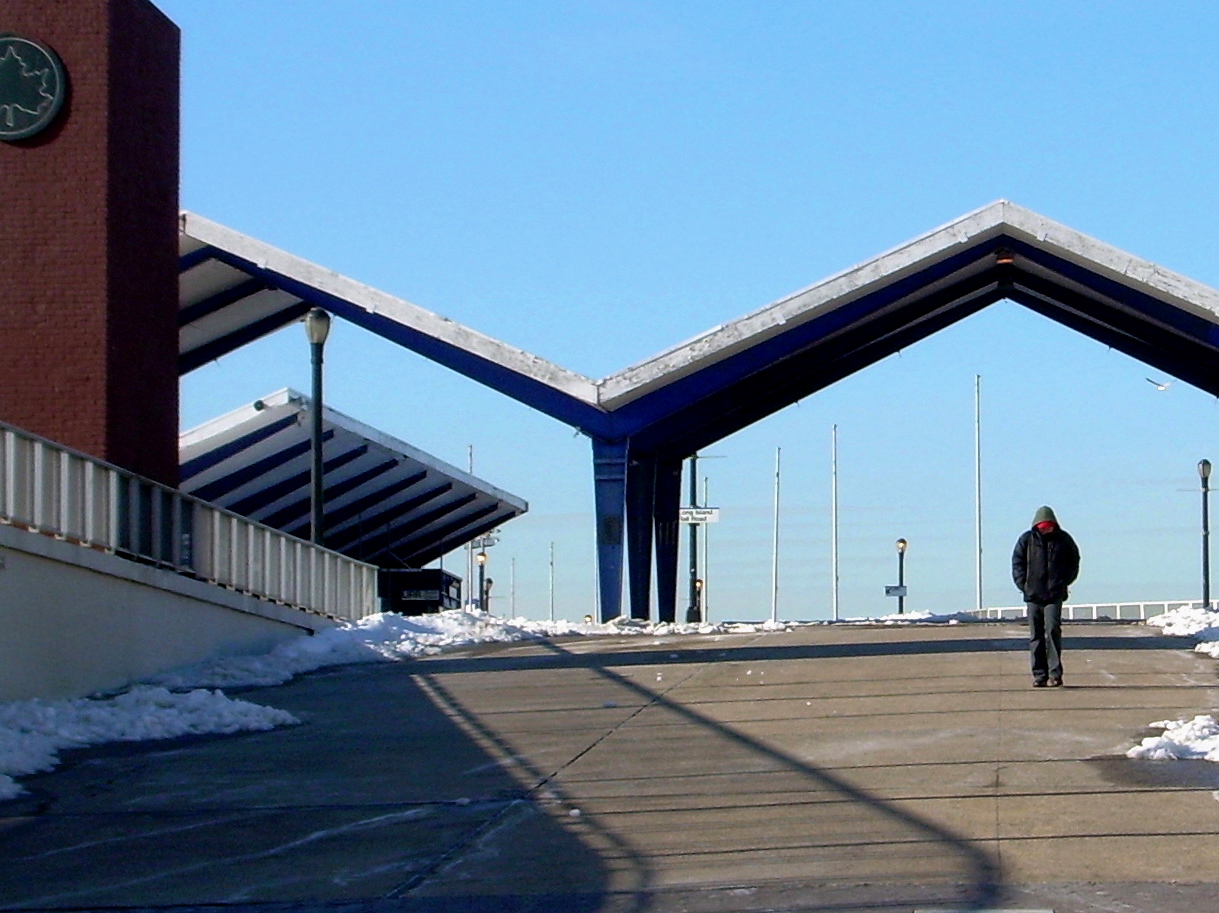
The walkway connecting the Willets Point-Shea Stadium subway stop with the park to the south.

Kate waiting for the 7 train. She doesn't know I've put this picture up here.
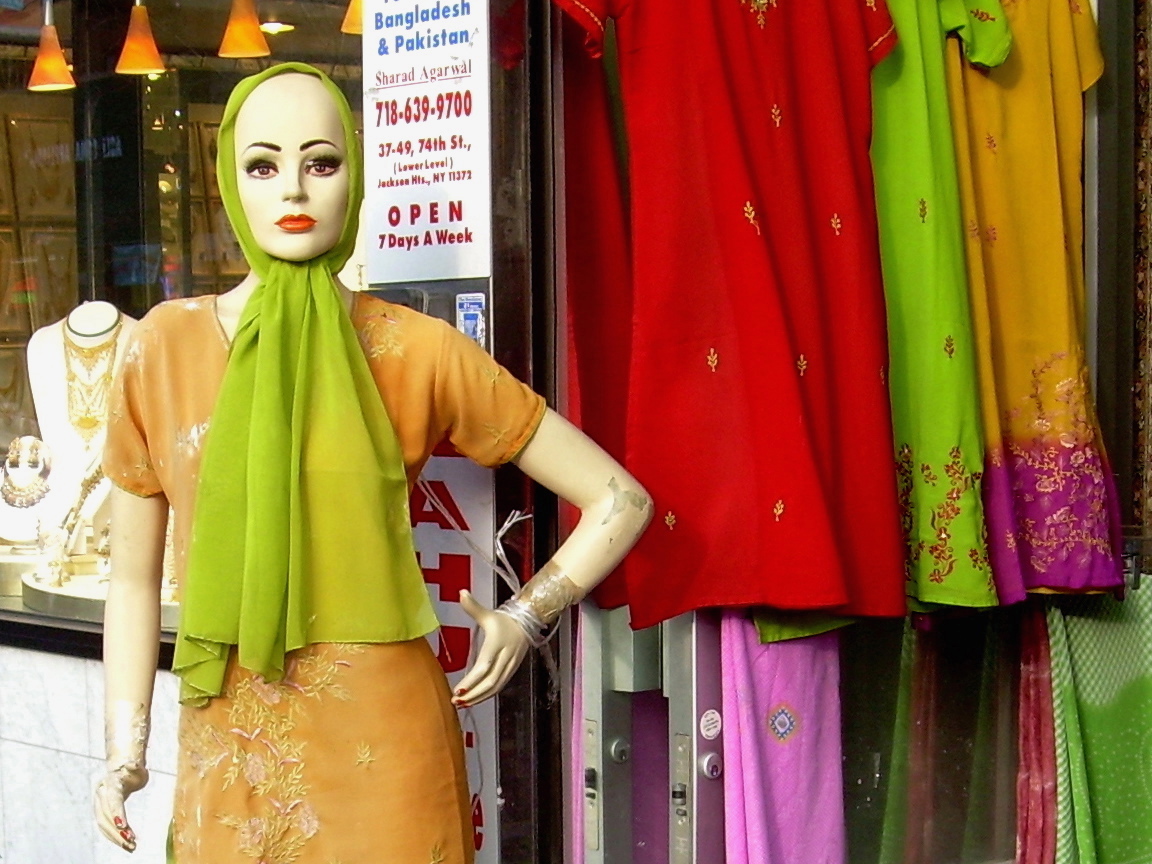
On the way home, we stopped off in Jackson Heights for lunch. Although we've long enjoyed the various cuisines of the Subcontinent, Kate's developed quite a taste for them since her trip to India last summer. (She took terrific pictures, too -- maybe one of these days she'll put them up on Flickr or something.) This was in front of one of the stores we passed on the way to the restaurant.
Labels: museums, queens, robert moses

